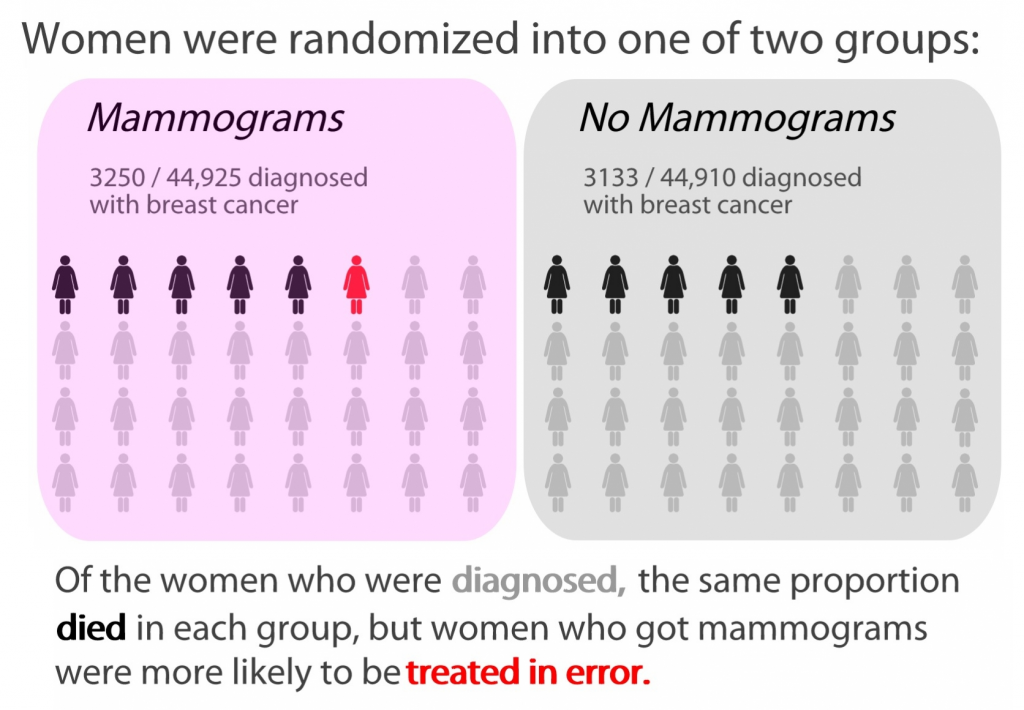Over at my day job, I’ve gotten to write about two of my major hobbyhorses recently. First in “Did We Mess Up on Mammograms?” I got to gloss the big study on the efficacy of breast cancer screening, nerd out about history/philosophy of medicine, and design an infographic.
While we remain torn between the old recommendation and the new, it’s tempting to stick which the more interventionist option. Doctors and patients would like the comfort of knowing they did something even if what they did wasn’t very good. In fact, breast cancer treatment, as well as its diagnosis, has fallen prey to this rationale.
Women used to receive the Halstead procedure, a particularly radical form of mastectomy in which the doctor would remove the breast, underlying chest muscle, and even, sometimes, muscle in the neck and arm. William Steward Halstead performed the operation in good faith, thinking it was better to do everything he could for his patients, seeking to make the extremity of his surgery match the intensity of his intentions.
The same diseased thinking spreads through our body politic. War hawks accuse non-interventionists of being indifferent to humanitarian causes or national interest, when, in fact, the most ballistically satisfying solution may do more to calm our nerves than to quiet regional tensions. Politicians, like medical regulatory boards, become fearful of admitting that facts on the ground have changed since they made a decision, and the employer mandate doesn’t make much sense in a slack labor market.
And here’s the infographic:
Meanwhile, this week, I made a connection between the rape allegations at Patrick Henry College and the broader issue of “How Universities Fail Students in Crisis” and, unfortunately, having plenty of examples from my own alma mater to draw upon:
When students at my alma mater discussed the mental health or sexual assault resources, it might have sounded like we were cribbing from the “Never Ever Talk to the Police” lecture by Professor James Duane of the Regent University School of Law that was taking a tour of campuses. You’re talking to someone who’s job is to safeguard the community, not you, if, in their opinion, you present a legal, physical, or reputational risk to the institution…
Students who seek help, especially students suffering from mental health issue or the lingering trauma of rape, are rolling the dice that the counselor assigned to them will be willing to take a risk on their recovery, instead of limiting the liability of their school.
And I also evaluated the new GOP push to finally use Big Data in their election efforts, and even used a sports metaphor, in “Republicans Try to Bridge the Big Data Gap.”
The Democrats’ playbook resembled the sabermetric approach of Billy Beane, the Oakland A’s coach profiled in Moneyball. By taking a finer-grained approach to a market (of persuadable voters, in the Democrats case, of free agents and draftees, in Beane’s), the quants were able to steal a march on their opponents.
But Billy Beane’s Oakland A’s only benefited from his Moneyball strategies for a few seasons before the rest of the league caught up, and his advantage didn’t last long enough to reach the World Series. His data-intensive approach only helped as long as players were systematically mispriced. Once the other general managers wised up, the market for players settled into a new equilibrium and the richer teams were able to outbid their rivals for better players.
And, speaking of Big Data, I’ve taken on a volunteer comms role at Code for DC, so I’ll sometimes be reporting on the projects these programmers are building to serve our local community. I just did a post to celebrate Open Data Day and profile some of the projects in development.












